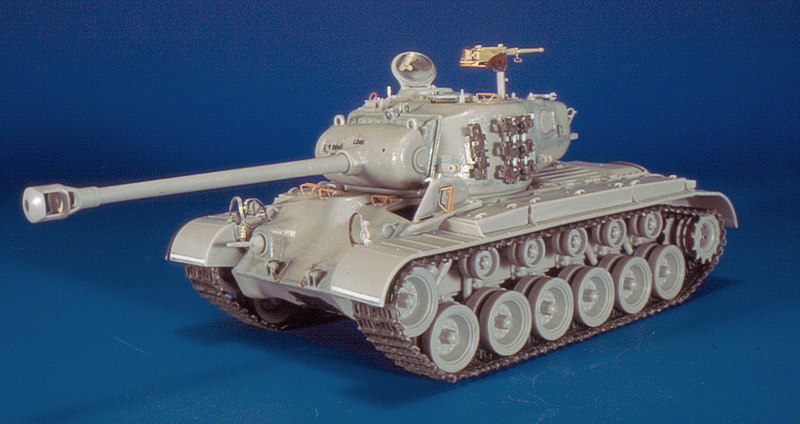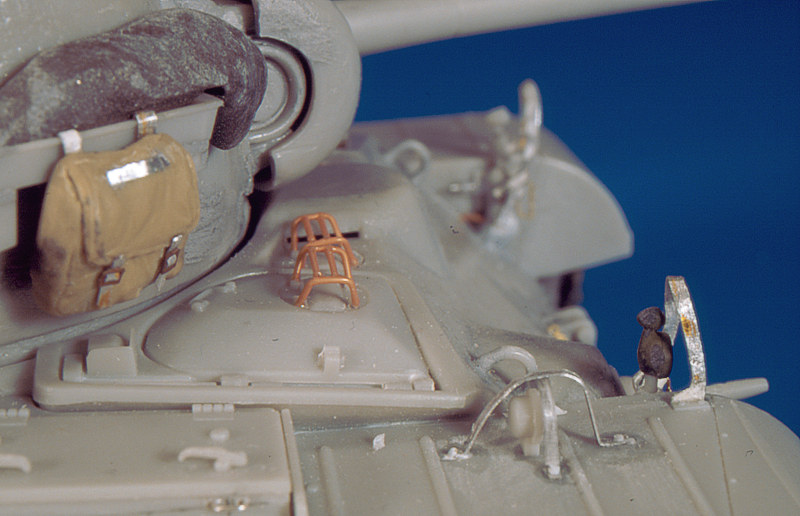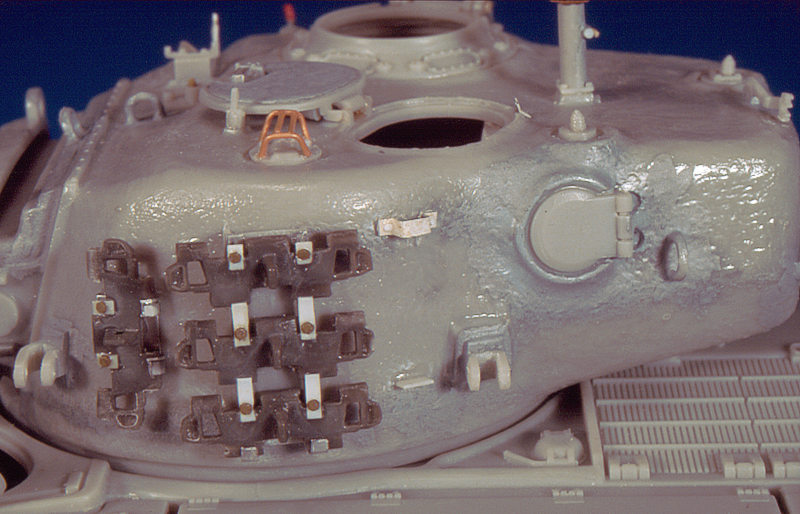
MOVE ON!
Building the Pershing

The model is the now re-released DML's T26E3 (ref 6032). It correctly depicts a WWII vintage Pershing with T81 single pin steel tracks commonly seen in this conflict. Tamiya has also just released its 1/35 Pershing which seems to have the same type of tracks. Anyway, the later T80E1 rubber pad tracks, were mounted in at least one Pershing tank during WWII.
DML's kit is one of their best, along with the Jagdtiger family and the Elefant/Ferdinand duet. The detail is good, and the fitting is overall right, but I needed to use some putty in some places. The trickiest part of the building process was to achieve a correct alignment for the suspension arms and the wheels. I think that in this area, Tamiya is still clearly ahead from Dragon. The tracks are of the link-by-link type, as usual with Dragon. Their fitting is not perfect, but they are buildable with not many complications. The links show ejection marks on the inner surface. I sanded down these marks in the links where they could be visible once installed.
The rough casting texture of the hull and turret surface is well represented by Dragon in the kit. Nevertheless I decided to enhance this texture by dissolving the surface of the plastic with ethyl acetate and brush onto it with an old, hard brush. The ethyl acetate has to be used only in well ventilated areas. Probably, ordinary liquid glue for plastic would have done the same job.
The only significant addition to the kit was a cal 0.50 machine gun from Verlinden. The kit was pretty much build out of the box, with some "compulsory" additions and improvements which are detailed in the following photographs. For the building process, the excellent article by Steven Zaloga in Military Modelling no. 7 vol. 30, 2000 has been used as primary reference.
As a general comment, the casting texture was enhanced by dissolving the external surface of the plastic with Humbrol liquid cement and texturing it with a hard, old brush. Once the surface was dry, a smooth sanding completed the work.
 |
| In this close view the periscope guards made with electric wire are visible. Also notice the guards for the headlamps and horn were made with strips of lead foil. Some screws, made with stretched sprue slices, were added in the horn guard. |
 |
| The spare track links holders on the left hand side of the turret were re-built with lead foil stripes and nuts coming from other kits leftovers. The changing track tools clamps were also detailed in this way. Two holes were drilled behind the cartridges ejection port.. |
|